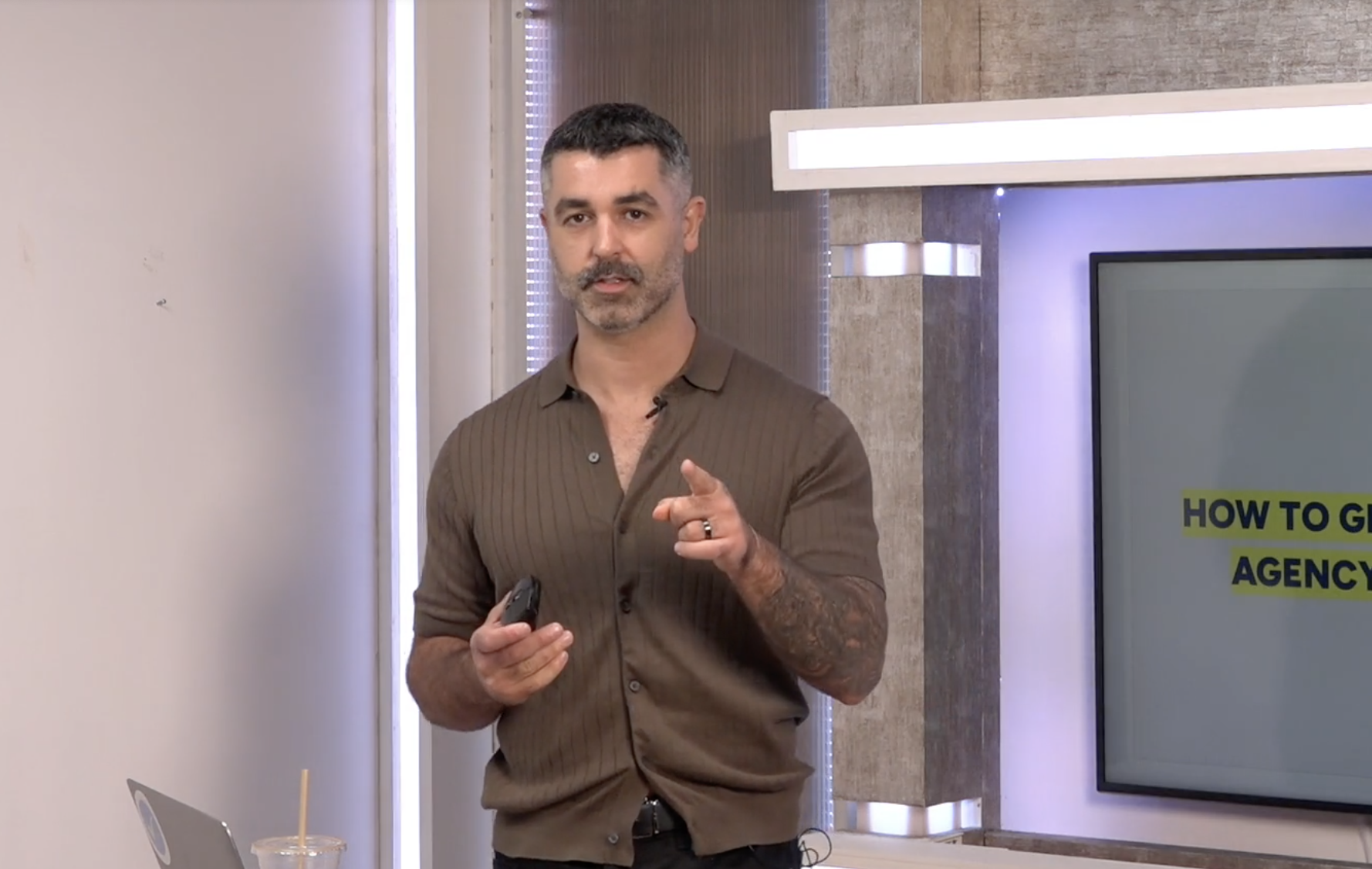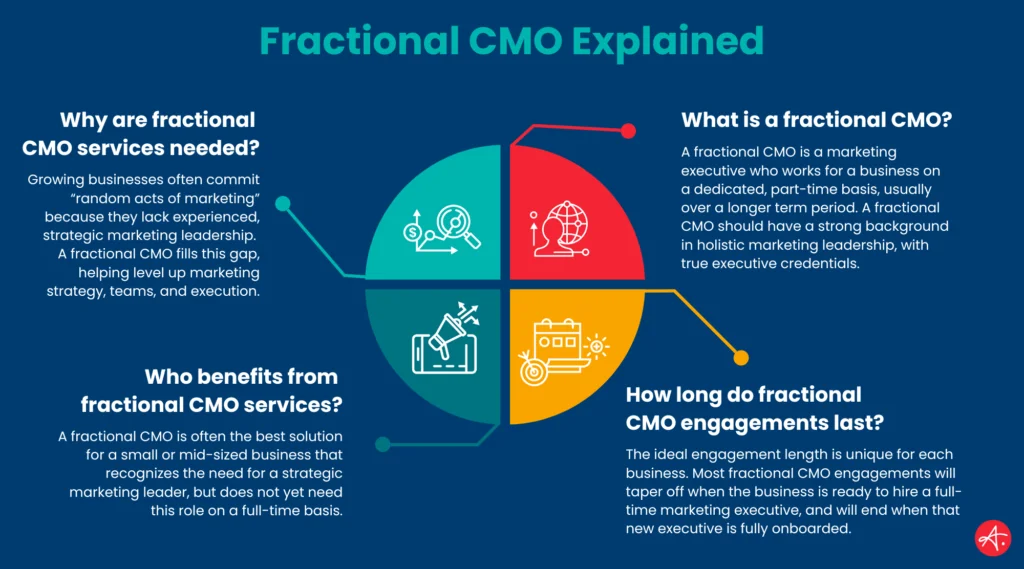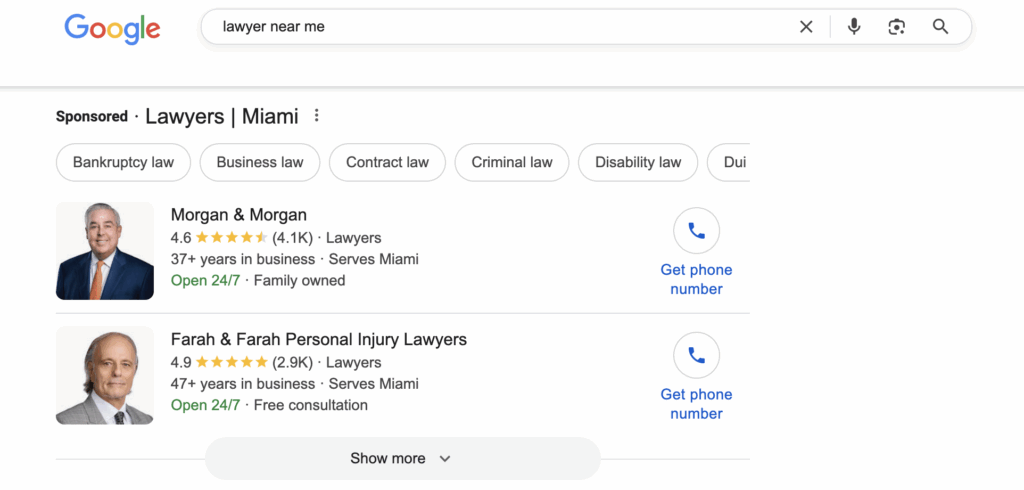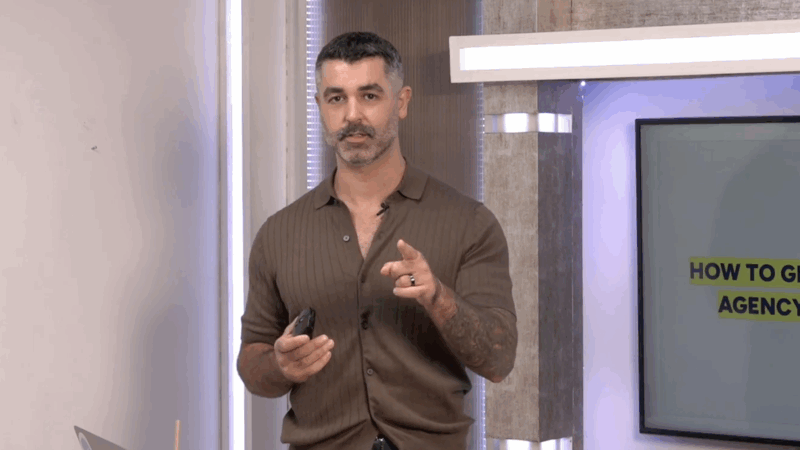Table of Contents
TL;DR: A fractional CMO is a part-time chief marketing officer who provides strategic marketing leadership specifically tailored to law firms.
We handle everything from digital marketing strategy to external agency oversight, helping law firms grow without the cost of a full-time executive.
This guide explains how fractional CMO services can transform your firm’s growth trajectory.

What Is a Fractional CMO for Law Firms?
A fractional CMO for law firms is a senior-level marketing executive who works with your practice on a part-time, contract basis — typically 10-20 hours per week or on a project basis.
Unlike general business marketers, they possess deep understanding of legal industry regulations, client acquisition patterns, and the unique challenges law firms face when marketing their services.
Think of them as your firm’s outsourced chief marketing officer. They develop comprehensive marketing strategies, oversee implementation, manage compliance requirements, and drive measurable growth—all without the overhead costs and long-term commitment of hiring a full-time CMO.
Here’s what sets them apart from other marketing options:
- They work as part of your leadership team, not as an external vendor
- They focus exclusively on strategy and high-level execution, not daily tasks
- They bring proven systems from other successful law firms
- They understand legal marketing compliance and ethical requirements
- They provide executive-level guidance at a fraction of full-time costs
The legal industry is experiencing unprecedented change. Client expectations have evolved, digital marketing has become essential, and the competition for high-value cases has intensified dramatically.

Meanwhile, many law firms find themselves caught between needing sophisticated marketing leadership and the financial reality of hiring a full-time Chief Marketing Officer.
This is where fractional CMO services become invaluable—providing the strategic marketing leadership law firms need to compete effectively in today’s market.
The Marketing Crisis Facing Modern Law Firms
The problem runs deeper than most partners realize.
Your law firm delivers exceptional legal services. Your clients rave about your expertise, and your case outcomes speak for themselves. But despite your legal prowess, something frustrating is happening: your client acquisition has plateaued, your marketing feels scattered, and younger, more digitally-savvy firms are capturing cases that should be yours.
You’ve tried the traditional approaches—networking events, referral relationships, maybe even some online advertising. You’ve invested in a new website, dabbled in social media, and perhaps hired a marketing coordinator.
Yet your marketing efforts feel disconnected, your ROI is unclear, and you’re not seeing the consistent flow of quality leads your firm deserves.
Here’s what’s making this crisis worse:
The legal marketing landscape has become incredibly complex. SEO requirements change constantly.
Pay-per-click advertising for legal keywords is expensive and competitive. Content marketing requires consistent, legally-compliant expertise. Social media demands daily attention. And compliance with bar association advertising rules adds another layer of complexity.
Meanwhile, you’re running a law firm. You don’t have time to become a marketing expert, nor should you. Every hour you spend trying to figure out Google Ads or content strategies is an hour not spent serving clients or developing legal expertise.
The solution isn’t hiring just any marketer—it’s bringing in strategic marketing leadership specifically designed for law firms.

Why Law Firms Are Embracing Fractional CMO Services
The Great Talent Shortage Meets Legal Industry Reality
The legal industry has always been conservative about marketing spending, but recent market changes have forced a reckoning. Client acquisition costs have risen significantly, especially in competitive practice areas like personal injury, business law, and family law.
Traditional marketing methods—referrals, networking, and yellow page ads—no longer generate sufficient case flow for most firms. Meanwhile, digital marketing requires expertise that most law firms don’t possess internally.
Budget Pressures and Growth Demands
Law firm partners face a challenging equation: they need sophisticated marketing to compete, but hiring a full-time CMO (with an average salary of $180,000+ plus benefits) represents a significant financial commitment that many firms can’t justify.
Fractional CMO services solve this dilemma by providing executive-level marketing leadership at a fraction of the cost, with the flexibility to scale up or down based on firm needs and budget cycles.
The Complexity of Legal Marketing Compliance
Marketing legal services isn’t like marketing consumer products. Every marketing initiative must comply with state bar association rules, maintain attorney-client privilege considerations, and navigate ethical advertising requirements. A fractional CMO specializing in law firms brings this crucial compliance expertise from day one.

Core Responsibilities of a Fractional CMO for Law Firms
A fractional CMO for law firms offers comprehensive marketing leadership tailored to the legal industry’s unique requirements:
Strategic Planning and Positioning:
- Developing firm-wide marketing strategies aligned with practice area strengths
- Creating compelling firm positioning that differentiates from competitors
- Establishing clear value propositions for each practice area
Digital Marketing Leadership:
- Building and optimizing law firm websites for conversion and compliance
- Developing SEO strategies for legal keywords and local search
- Managing Google Ads and other paid advertising campaigns
- Creating content marketing strategies that showcase legal expertise
Lead Generation and Client Acquisition:
- Designing and implementing comprehensive lead generation systems
- Developing intake processes that convert leads to clients
- Creating referral programs and professional networking strategies
- Building email marketing campaigns for different practice areas
Brand Development and Reputation Management:
- Establishing consistent brand messaging across all marketing channels
- Managing online reputation and review strategies
- Creating thought leadership platforms for firm attorneys
- Developing crisis communication protocols
Marketing Operations and Team Development:
- Implementing marketing automation systems and CRM platforms
- Training internal staff on marketing processes and compliance
- Establishing marketing budgets and ROI measurement systems
- Providing ongoing coaching and strategic guidance
Compliance and Risk Management:
- Ensuring all marketing activities comply with state bar regulations
- Reviewing marketing materials for ethical compliance
- Staying current with changing advertising rules and requirements
- Managing client confidentiality in marketing initiatives

Fractional CMO vs. Full-Time CMO: The Law Firm Perspective
For law firms considering marketing leadership options, the comparison between fractional and full-time CMOs reveals clear advantages.
Recruitment Challenges in Legal Marketing
Finding a qualified full-time CMO who understands legal industry nuances is exceptionally difficult. The candidate pool is small, recruitment costs are high, and the risk of a bad hire can be devastating to firm morale and marketing momentum.
Legal marketing requires specific expertise that general marketers don’t possess. Bar compliance, legal content creation, and understanding of legal client decision-making processes are specialized skills that take time to develop.
Cost Considerations for Law Firms
The total cost of a full-time CMO extends far beyond salary. Consider:
- Base salary: $150,000 – $250,000+
- Benefits and healthcare: $30,000 – $50,000
- Recruitment costs: $15,000 – $30,000
- Onboarding and training: 3-6 months of reduced productivity
- Risk of bad hire: Potentially starting the process over
A fractional CMO provides immediate expertise at a fraction of these costs, with the flexibility to adjust engagement based on firm growth and budget cycles.
Immediate Impact and Expertise
Fractional CMOs specializing in law firms bring proven systems and strategies from other successful legal practices. They can implement best practices immediately, avoiding the trial-and-error period that often accompanies full-time hires who are new to legal marketing.
Flexibility for Law Firm Growth Patterns
Law firms often experience cyclical busy periods, seasonal variations, and unpredictable case loads. A fractional CMO arrangement provides the flexibility to scale marketing leadership up during growth periods and adjust during slower times—something impossible with full-time employees.
Real Results: How Fractional CMO Services Transform Law Firms
Consider the case of a mid-sized personal injury firm in Texas that was struggling with inconsistent case flow and rising advertising costs. Despite spending $15,000 monthly on Google Ads, their cost per lead had increased 40% over two years, and conversion rates were declining.
As their fractional CMO, I implemented a comprehensive strategy that included:
Strategic Restructuring:
- Conducted thorough audit of existing marketing efforts
- Identified most profitable case types and client profiles
- Restructured Google Ads campaigns around high-value keywords
- Implemented conversion tracking and lead scoring systems
Content and Authority Building:
- Developed weekly legal content addressing common client questions
- Created case study library showcasing successful outcomes
- Established partner thought leadership through speaking engagements
- Built comprehensive resource library for potential clients
Systems and Process Improvement:
- Implemented new CRM system with automated follow-up sequences
- Redesigned intake process to improve conversion rates
- Created referral partner program with other professionals
- Established monthly reporting and ROI analysis systems
Results after 12 months:
- 65% increase in qualified leads
- 40% improvement in lead-to-client conversion rate
- 25% reduction in cost per acquisition
- $2.3 million increase in annual revenue
The firm is now on track to exceed $8 million in annual revenue while maintaining profitability margins that allow for continued growth and reinvestment.
Which Law Firms Need Fractional CMO Services?
While any law firm can benefit from strategic marketing leadership, certain situations make fractional CMO services particularly valuable:
Firms Experiencing Growth Challenges:
- Stagnant or declining case flow despite market opportunities
- Difficulty competing with larger firms or newer, more digitally-savvy practices
- Inconsistent marketing results and unclear ROI on marketing investments
Budget-Conscious Firms Seeking Strategic Leadership:
- Need for executive-level marketing guidance without full-time executive costs
- Desire to improve marketing effectiveness before committing to larger investments
- Seasonal practices requiring flexible marketing leadership
Firms Undergoing Transitions:
- Expanding into new practice areas or geographic markets
- Preparing for partner retirement or succession planning
- Recovering from reputation challenges or negative publicity
Technology and Digital Marketing Gaps:
- Outdated websites and digital presence
- Lack of understanding about SEO, content marketing, and online advertising
- Need for marketing automation and lead management systems
Compliance and Risk Management Concerns:
- Uncertainty about bar advertising rules and ethical requirements
- Desire to improve marketing while maintaining strict compliance
- Need for professional oversight of marketing activities
Popular Fractional CMO Models for Law Firms
Law firms can choose from several fractional CMO engagement models:
Independent Legal Marketing Specialist
Working directly with an independent fractional CMO who specializes in legal marketing offers the most cost-effective approach. These professionals typically have extensive backgrounds in law firm marketing and can provide personalized attention to your firm’s specific needs.
Advantages:
- Lower cost due to minimal overhead
- Direct relationship and communication
- Customized strategies based on firm-specific needs
- Deep expertise in legal industry nuances
Specialized Legal Marketing Agencies
Some marketing agencies have developed fractional CMO services specifically for law firms. These typically offer a team approach with multiple specialists supporting the strategic leadership.
Considerations:
- Higher cost due to agency overhead
- Access to diverse skill sets and resources
- Potential for less personalized attention
- Importance of verifying legal industry expertise
Legal Industry Marketing Consultancies
Some consultancies focus exclusively on law firm marketing and offer fractional CMO services as part of their comprehensive offerings.
Benefits:
- Deep legal industry knowledge and connections
- Access to legal-specific marketing tools and resources
- Understanding of compliance requirements
- Higher investment reflecting specialized expertise
How Fractional CMO Services Compare to Other Law Firm Marketing Options
Law firms have several options for improving their marketing effectiveness. Here’s how fractional CMO services compare.

Fractional CMO vs. Marketing Agency:
- Fractional CMO provides strategic leadership; agencies focus on execution
- CMO works as part of your team; agency remains external vendor
- CMO understands firm culture and goals; agency serves multiple clients
- CMO provides ongoing strategic guidance; agency delivers specific services
Fractional CMO vs. Internal Marketing Coordinator:
- CMO brings executive-level strategy; coordinator handles tactical implementation
- CMO has proven track record across multiple firms; coordinator learns on the job
- CMO provides comprehensive marketing leadership; coordinator manages specific tasks
- CMO can guide firm growth strategy; coordinator executes existing plans
Fractional CMO vs. Full-Time CMO:
- Fractional provides immediate expertise at lower cost
- Full-time offers dedicated attention but requires significant investment
- Fractional brings experience from multiple firms; full-time learns your firm specifically
- Fractional offers flexibility; full-time requires long-term commitment
How to Choose the Right Fractional CMO for Your Law Firm
Selecting the right fractional CMO requires careful evaluation of both marketing expertise and legal industry knowledge.
Define Your Specific Needs
Before beginning your search, clearly identify what you want to accomplish:
- Are you looking to increase case volume in specific practice areas?
- Do you need help with digital marketing and online presence?
- Are you planning expansion into new markets or services?
- Do you need help with marketing compliance and risk management?
Evaluate Legal Industry Experience
Not all fractional CMOs understand the legal industry’s unique requirements. Look for:
- Proven track record working with law firms similar to yours
- Understanding of legal marketing compliance requirements
- Knowledge of legal client acquisition patterns and decision-making processes
- Familiarity with legal industry marketing tools and platforms
Request Specific Results and Case Studies
Ask potential fractional CMOs to provide:
- Detailed case studies from similar law firms
- Specific metrics and results achieved
- References from current or former law firm clients
- Examples of marketing strategies developed for legal practices
Understand Their Strategic Approach
A qualified fractional CMO should have a structured approach to law firm marketing. For example, my four-step framework for law firm clients includes:
- Comprehensive Marketing Audit: Analyzing current marketing efforts, competitive landscape, and growth opportunities
- Market and Competition Analysis: Understanding local legal market dynamics and identifying positioning opportunities
- Strategic Plan Development: Creating detailed marketing strategy with specific tactics and timelines
- Implementation Roadmap: Providing clear pricing, expected ROI, and timeline for achieving marketing goals
Assess Communication and Cultural Fit
Your fractional CMO will work closely with partners and staff, so ensure:
- Clear communication style that matches firm culture
- Understanding of law firm decision-making processes
- Ability to work effectively with legal professionals
- Respect for firm values and professional standards
Getting Started with Fractional CMO Services
If you’re ready to transform your law firm’s marketing effectiveness, the next step is scheduling a strategic consultation to explore how fractional CMO services can address your specific challenges and growth objectives.
During this consultation, we’ll review your current marketing efforts, identify immediate opportunities for improvement, and discuss how ongoing strategic marketing leadership can drive sustainable growth for your practice.
The legal industry will continue evolving, and firms that embrace strategic marketing leadership will capture the lion’s share of quality cases and client relationships. Don’t let your firm fall behind while competitors gain market advantage.
Ready to discuss how fractional CMO services can accelerate your firm’s growth? Schedule your strategic consultation today to learn how proven legal marketing strategies can transform your practice.
This comprehensive guide demonstrates how fractional CMO services specifically address law firms’ unique marketing challenges. From compliance requirements to client acquisition strategies, specialized legal marketing leadership provides the expertise and flexibility growing law firms need to compete effectively in today’s market.
